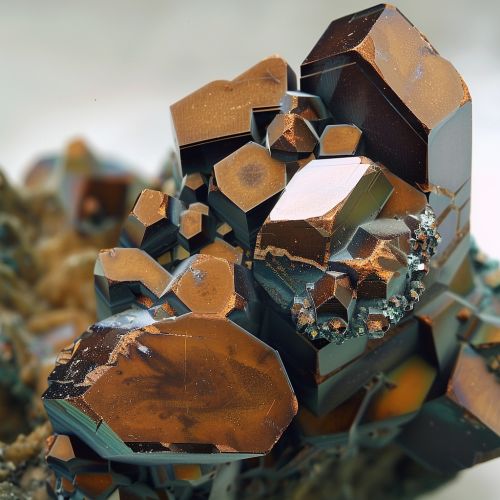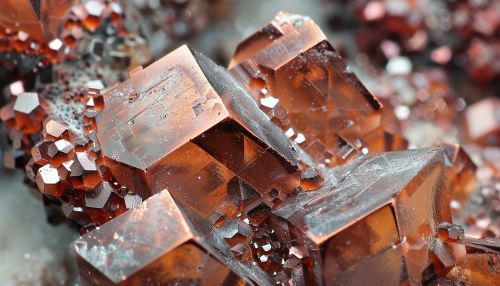Quantum spin liquids
Introduction
Quantum spin liquids (QSLs) represent a fascinating state of matter in condensed matter physics, characterized by the absence of long-range magnetic order even at absolute zero temperature. This exotic phase arises due to strong quantum fluctuations that prevent the spins in a magnetic system from aligning in a regular pattern. The concept of QSLs was first proposed by Philip W. Anderson in 1973, and since then, it has become a significant area of research due to its implications for understanding high-temperature superconductivity, topological order, and potential applications in quantum computing.
Theoretical Background
Quantum Mechanics and Magnetic Systems
In classical magnetism, spins in a magnetic material tend to align either parallel or antiparallel to each other, leading to ferromagnetic or antiferromagnetic order, respectively. However, in quantum mechanics, the situation is more complex. Quantum spins are described by quantum states that can exist in superpositions, leading to phenomena such as entanglement and quantum fluctuations.
Heisenberg Model
The Heisenberg model is a fundamental theoretical framework used to describe interactions between spins in a magnetic system. The Hamiltonian for the Heisenberg model is given by:
\[ H = J \sum_{\langle i,j \rangle} \mathbf{S}_i \cdot \mathbf{S}_j \]
where \( J \) is the exchange interaction parameter, \( \mathbf{S}_i \) and \( \mathbf{S}_j \) are spin operators at sites \( i \) and \( j \), and the sum runs over nearest-neighbor pairs. Depending on the sign of \( J \), the system can exhibit ferromagnetic (\( J > 0 \)) or antiferromagnetic (\( J < 0 \)) order.
Frustration and Quantum Spin Liquids
Frustration occurs in a magnetic system when competing interactions prevent the spins from settling into a simple ordered state. A classic example is the antiferromagnetic interaction on a triangular lattice, where it is impossible to satisfy all pairwise interactions simultaneously. This frustration can lead to a highly degenerate ground state with no long-range order, giving rise to a quantum spin liquid.
Experimental Realizations
Kagome Lattice Compounds
One of the most studied systems for realizing QSLs is the kagome lattice, a two-dimensional network of corner-sharing triangles. Herbertsmithite (ZnCu3(OH)6Cl2) is a well-known kagome lattice compound that exhibits QSL behavior. Neutron scattering experiments on herbertsmithite have revealed the absence of magnetic order down to very low temperatures, consistent with the QSL state.


Organic Compounds
Organic materials such as κ-(BEDT-TTF)2Cu2(CN)3 and EtMe3Sb[Pd(dmit)2]2 have also been identified as potential QSL candidates. These materials consist of layers of organic molecules that form triangular or kagome lattices, leading to strong frustration and quantum fluctuations. Experimental techniques such as nuclear magnetic resonance (NMR) and specific heat measurements have provided evidence for the QSL state in these compounds.
Pyrochlore Lattice Compounds
The pyrochlore lattice, a three-dimensional network of corner-sharing tetrahedra, is another promising platform for QSLs. Compounds such as Tb2Ti2O7 and Yb2Ti2O7 have been extensively studied for their potential to host QSL states. In these systems, the interplay between spin-orbit coupling, crystal field effects, and magnetic interactions leads to complex ground states that may exhibit QSL behavior.
Theoretical Models and Predictions
Resonating Valence Bond (RVB) Theory
The RVB theory, proposed by Anderson, is one of the earliest and most influential models for QSLs. In the RVB state, spins form singlet pairs that resonate between different configurations, leading to a highly entangled ground state. The RVB theory has been particularly successful in explaining the properties of high-temperature superconductors and has inspired numerous studies on QSLs.
Spinon and Visons
In QSLs, the elementary excitations are often fractionalized particles known as spinons and visons. Spinons carry spin-1/2 but no charge, while visons are topological excitations associated with the breaking of loop configurations in the spin liquid. These exotic excitations can be detected through various experimental techniques, such as inelastic neutron scattering and thermal transport measurements.
Topological Order
QSLs are also characterized by topological order, a type of quantum order that goes beyond the conventional symmetry-breaking paradigm. Topological order is associated with long-range entanglement and the presence of anyonic excitations, which obey non-Abelian statistics. This property makes QSLs particularly interesting for applications in quantum computing, as anyons can be used to implement fault-tolerant quantum gates.
Experimental Techniques
Neutron Scattering
Neutron scattering is a powerful technique for probing the magnetic properties of materials. In QSLs, neutron scattering experiments can reveal the absence of magnetic order and provide information about the nature of the excitations. For example, the detection of a continuum of excitations, rather than sharp magnon peaks, is a hallmark of the QSL state.
Nuclear Magnetic Resonance (NMR)
NMR is another valuable tool for studying QSLs. By measuring the relaxation rates and shifts of nuclear spins in a magnetic field, NMR can provide insights into the local magnetic environment and the dynamics of the spin system. In QSLs, NMR experiments often show unusual temperature dependence and broadening of spectral lines, indicative of strong quantum fluctuations.
Specific Heat Measurements
Specific heat measurements can reveal important information about the low-temperature behavior of QSLs. In conventional magnets, a peak in the specific heat is typically observed at the transition temperature to a magnetically ordered state. In contrast, QSLs often exhibit a broad, featureless specific heat curve, reflecting the absence of long-range order and the presence of low-energy excitations.
Applications and Implications
High-Temperature Superconductivity
The study of QSLs has important implications for understanding high-temperature superconductivity. The RVB theory, originally proposed to explain QSLs, has been extended to describe the superconducting state in cuprates. In this context, the pairing of electrons into singlets in the QSL state is analogous to the Cooper pairs in a superconductor, suggesting a deep connection between these two phenomena.
Quantum Computing
The topological order and anyonic excitations in QSLs make them promising candidates for quantum computing applications. Anyons can be used to implement topological quantum computation, which is inherently fault-tolerant due to the non-local nature of the anyonic states. This approach has the potential to overcome some of the major challenges in building practical quantum computers.
Spintronics
QSLs also have potential applications in the field of spintronics, which exploits the spin degree of freedom in electronic devices. The unique properties of QSLs, such as spin fractionalization and long-range entanglement, could lead to new types of spintronic devices with enhanced functionality and performance.
Challenges and Future Directions
Material Synthesis
One of the major challenges in the study of QSLs is the synthesis of suitable materials. Many candidate materials exhibit disorder or impurities that can obscure the intrinsic properties of the QSL state. Developing new synthesis techniques and improving the purity of existing materials are critical for advancing the field.
Experimental Verification
Despite significant progress, unambiguous experimental verification of the QSL state remains challenging. The subtle and often indirect signatures of QSLs require sophisticated experimental techniques and careful interpretation of the data. Continued development of experimental methods and theoretical models is essential for establishing the existence and properties of QSLs.
Theoretical Understanding
The theoretical understanding of QSLs is still evolving, with many open questions and competing models. Further theoretical work is needed to clarify the nature of the QSL state, the role of different interactions, and the relationship between QSLs and other exotic phases of matter. Advances in computational techniques, such as tensor network methods and quantum Monte Carlo simulations, are likely to play a key role in this endeavor.
